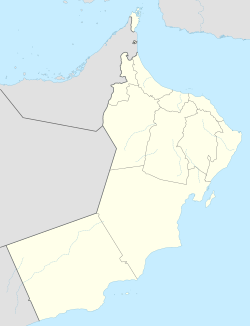The Sharqiya Sands[1] (Arabic: ٱلرِّمَال ٱلشَّرْقِيَّة, romanized: Ar-Rimāl Ash-Sharqiyyah, formerly known as Wahiba Sands (Arabic: رِمَال وَهِيْبَة, romanized: Rimāl Wahībah or Arabic: رَمْلَة آل وَهِيْبَة, romanized: Ramlat Āl Wahībah)) is a region of desert in Oman.[2][3] The region was named for the Bani Wahiba tribe.[4] Divided between the northern and southern governorates in the Eastern Region. The area is defined by a boundary of 180 kilometers (110 mi) north to south and 80 kilometers (50 mi) east to west,[5] with an area of 12,500 square kilometers (4,800 sq mi).[6] The desert has been of scientific interest since a 1986 expedition by the Royal Geographical Society documented the diversity of the terrain, the flora and fauna, noting 16,000 invertebrates as well as 200 species of other wildlife, including avifauna.[5] They also documented 150 species of native flora.
- ^ "Travel to Oman, Visit Muscat through Oman Travel Guide for Sultanate of Oman Adventure". Ministry of Tourism, Sultanate of Oman. Archived from the original on 6 November 2014. Retrieved 6 November 2014.
- ^ "The Wahiba Sands". Rough Guides. Retrieved 2014-08-16.
- ^ "Sharqiya (Wahiba) Sands, Oman - Travel Guide, Info & Bookings – Lonely Planet". Lonelyplanet.com. Retrieved 2013-06-09.
- ^ Alsharan, 615.
- ^ a b Darke and Shields, 216.
- ^ Alsharan, 216.
